Pro Women’s Bike Positions in Kona

For most of the aerobar era – 35 years and counting – pro women’s bike positions have not been as optimized as those of the men, in my opinion. Why? The largest single reason is that the bikes weren’t adjustable enough to accommodate the ideal position of many of these women. The bikes were either too long or too tall so many women (and shorter men) couldn’t get into the positions they needed.
This was partly the fault of the bike makers; partly the fault of the shorter-statured buyers who make up this market. The most obvious solution for a person 10 percent smaller is a bike that’s 10 percent smaller, including wheels that are 10 percent smaller (and for that matter 10 or 20 percent narrower). Shorter riders were presented that choice with the 650c wheel size (571 bead diameter) and rejected it; and have that choice presented now with the so-called 27.5” or 650b wheel size (584mm bead diameter).
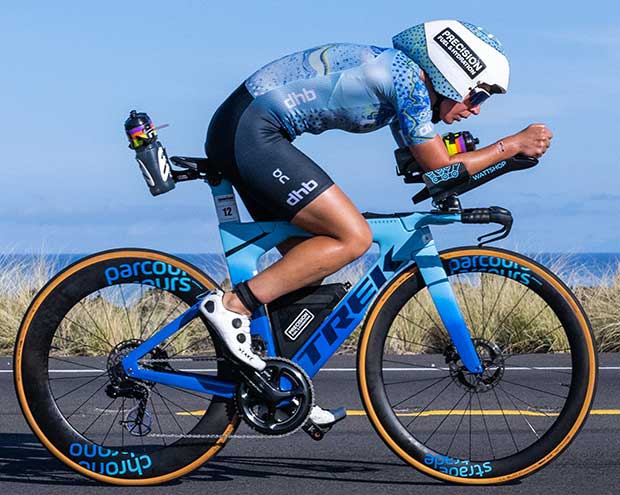
That said, there are ways to make a bike today with a 700c wheel that is both low enough and not overlong. Cervelo does a good job of moving the front wheel axle forward to provide smaller riders with a proper cockpit distance while avoiding shoe overlap. The integrated aerobars or aftermarket aerobars in the pricier bikes offer a low enough position for most shorter riders, and Profile Design makes its Subsonic bar for those who need a lower front end on a less expensive bike.
If you look at the positions pro women rode in Kona they’re quite good. (At least I think so.) They’re also very similar to what we saw in the men’s race. Women in the pro field at this year’s Hawaiian IRONMAN had pretty compact cockpits, slightly upturned arms, and were appropriately low. But as with the men’s positions you’d need to add for the most part.
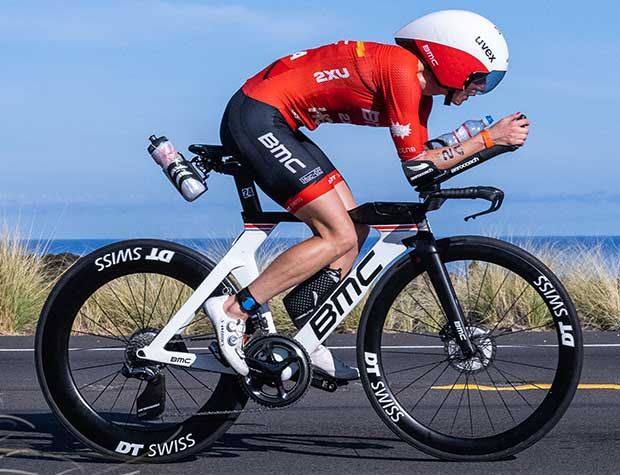
I chose the first 3 images above because the positions were pretty much congruent; because they’re top athletes; and because they each do something well – or at least I think they do it well – that we’re starting to see among the best men and women. The first image above is of Lucy Charles-Barclay, and as you see she rides pretty low, tighter than most, upward arm angle to match the aerobar style she’s using (a full-length forearm system from Cube) and, finally, note how her helmet matches her position and her morphology. The second image is of Fenella Langridge who placed 6th in this year’s Kona. She’s not as low nor as tight as Lucy. Should she be? I don’t know; I’m not her fitter. But I’d say that Lucy is on the aggressive end of the “consensus” spectrum and Fenela is pretty much square in the middle. I show Fenella because she also seems to have found a helmet to match her body and her position. Then just above we see race winner Chelsea Sodaro, who’s pretty similar to Fenella both on position and in the way her helmet choice is a good match.
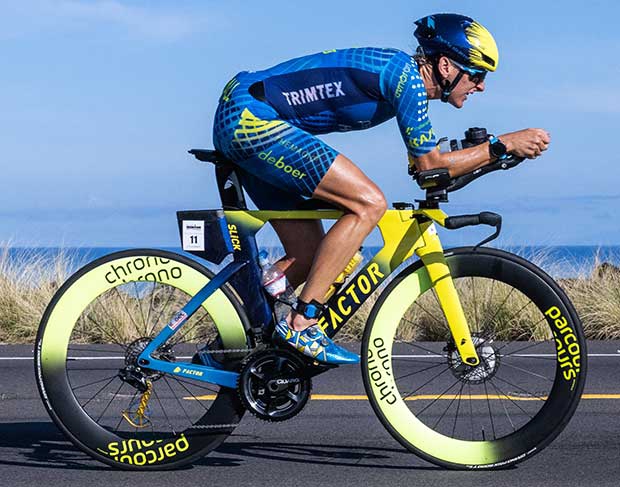
Laura Siddall has a great position and she has a talent for riding with a rotated pelvis and a flat back. The one obvious difference is that she doesn’t show that shape as do the other women. We’re going to write, in detail, about Sam Laidlow’s position, and how his upper body achieves a shape through, chiefly, really narrow elbows. There may be a rounding of the shoulders and a shrug that, in combination with the right helmet and perhaps a longer cockpit, gives him a uniquely good presentation to the wind. If there is anything new and notable about today’s positions – not just in triathlon but in high-end TT racing – it’s that the shape is the thing. It could be that Laura’s talent for a flat back could be put to even better use with some attention to the shape from the high back and shoulders forward (and a helmet to match that shape).
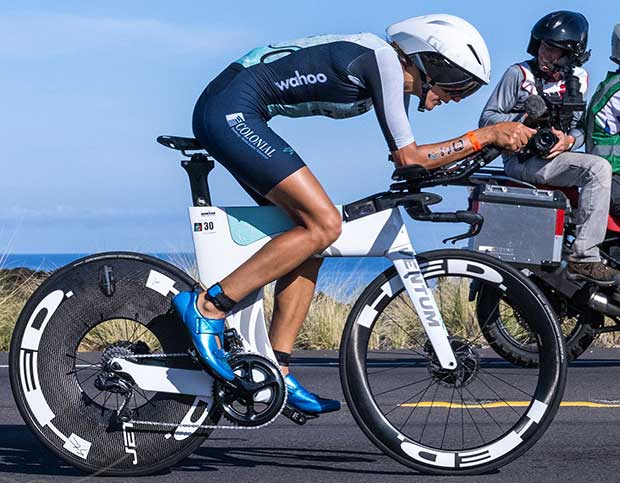
Lauren Brandon didn’t have the race she wanted but it seems to me she’s paid attention to her presentation to the wind and the choice of helmet to augment it.
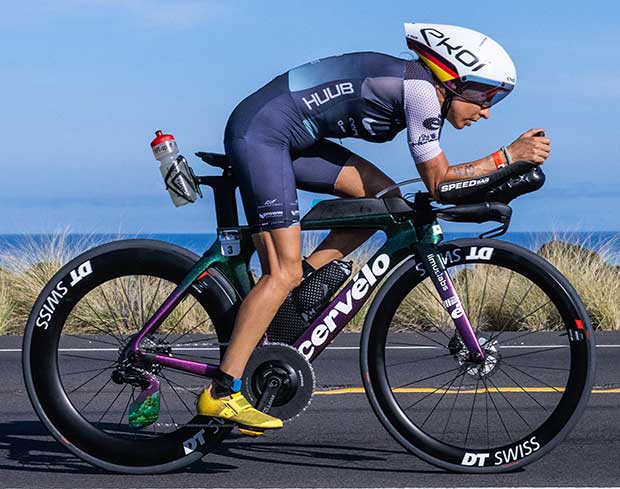
Anne Haug is 5’5” and that qualifies her for a smaller-wheeled bike. But she’s not riding one and, as you see, she gets acceptably low and pretty tight in the cockpit aboard a bike with 700c wheels. This is – as noted – due to the attention Cervelo pays to this. There’s a lot that goes into this. The bike has to have a shallower head angle and to keep the trail constant the fork needs more offset. This means cutting a new mold for the fork and you either invest in this or you don’t if you’re a bike brand. Cervelo does. Other brands don’t or, just as likely, their designers don’t even know what I’m talking about or don’t care.
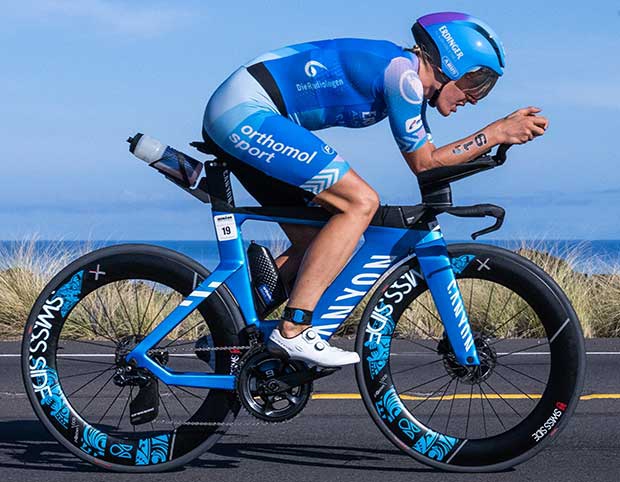
I love everything about Daniela Bleymehl’s position. The one difference between her and some of those listed higher up is the helmet. Her position is great. Is that the best helmet for it? Maybe so. I don’t think you can tell just by eyeballing (and this is just one still image). But my instinct tells me Lucy’s the gold standard and I think Daniela could pretty easily get there, if *there* is as productive for her as it is for Lucy.
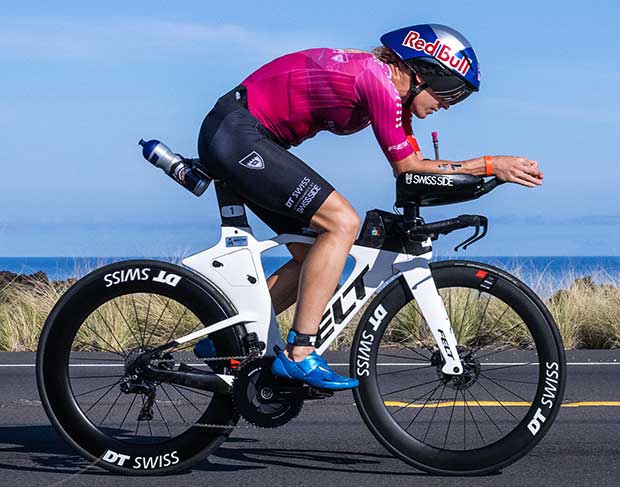
There are two aero bike positions struck by two riders that have never resonated with me: Dave Scott and Daniela Ryf. They have won the Hawaiian IRONMAN World Championship 6 and 4 times respectively, so their positions obviously don’t need to meet with my approval. Do I think Daniela’s position should change? No. I just note the differences between her and others’ positions. She’s not as forward in the saddle, not as low in front, and the forearms are flat or even slightly down. She’s a throwback to riders from 15 years ago. I wonder if she gets the full benefit of that SwissSide aerobar with her aerobar tilt. Either her position is perfect, or she’s proof that the engine always prevails.
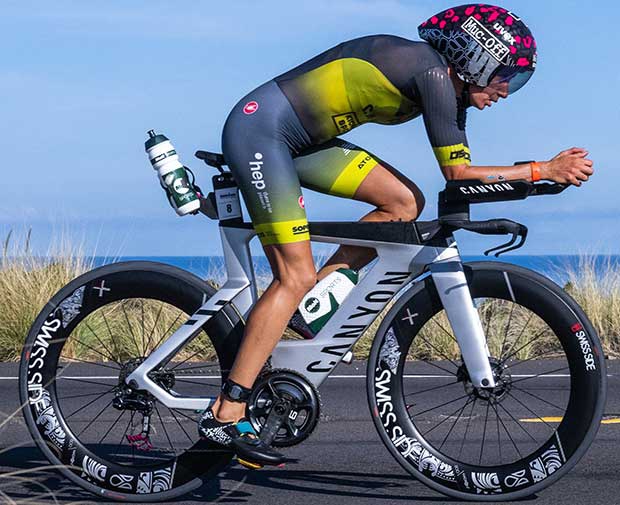
Not all positions are low, and Laura Philipp rides with a more open hip angle – not quite as flat a back – as most of the others pictured here. But some of the strongest riders in IRONMAN throughout its history – Jürgen Zäck and Normann Stadler come to mind – rode with a position you wouldn’t single out for the small frontal profile.
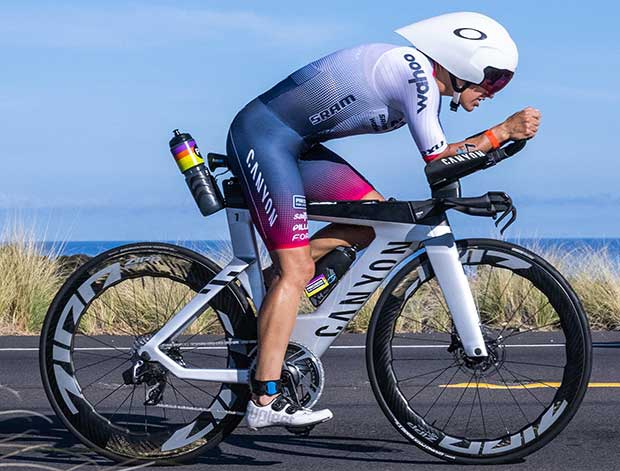
Sarah Crowley is another example of that. The adjustment limits in their bikes are not the issue here, but I don’t know that lower would be better. These might be the ideal positions. I show them to demonstrate that not all the women in the pro field rode the same way.
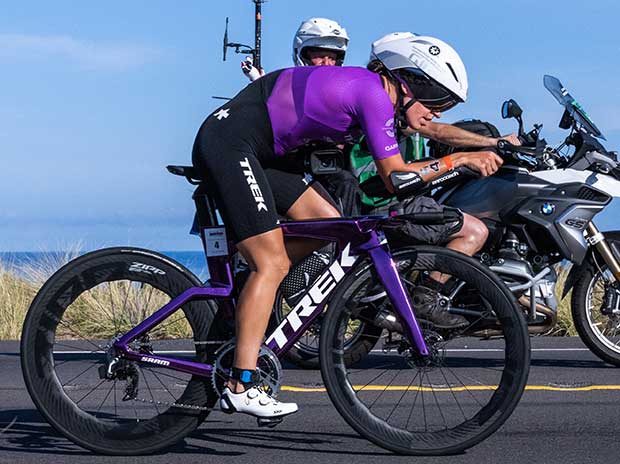
Skye Moench seems to me to be a very representative position. Right on the fat of the bell curve. To my eye, the most obvious divergence between the men and the women in Kona this year is that some men – Sam Laidlow, Magnus Ditlev, Jesper Svennson, Josh Amberger – are choosing longer cockpits which, along with narrow armrests – might help them achieve round shoulders, and a better presentation to the wind. I didn’t find any of the women I saw doing that.
But the women have closed the gap to the men in terms of rider positions (unless Laidlow is on to something). Chelsea Sodaro and Lucy Charles-Barclay don’t ride like Sam Laidlow, but their positions are quite similar to and on par with (or better than) those of Gustav Iden and the best of the top men.
PHOTOS: Aaron Palaian


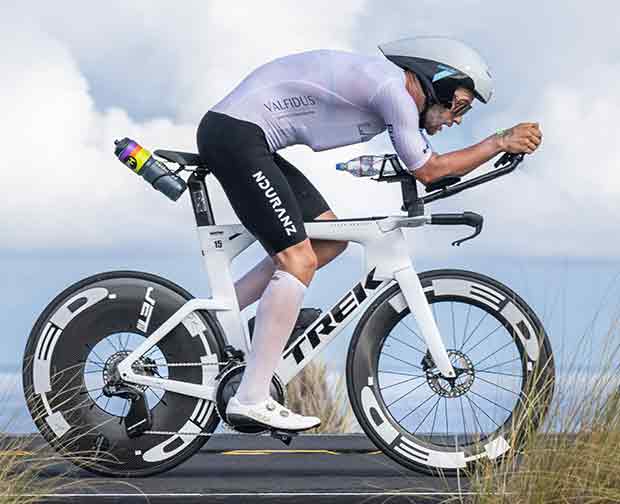
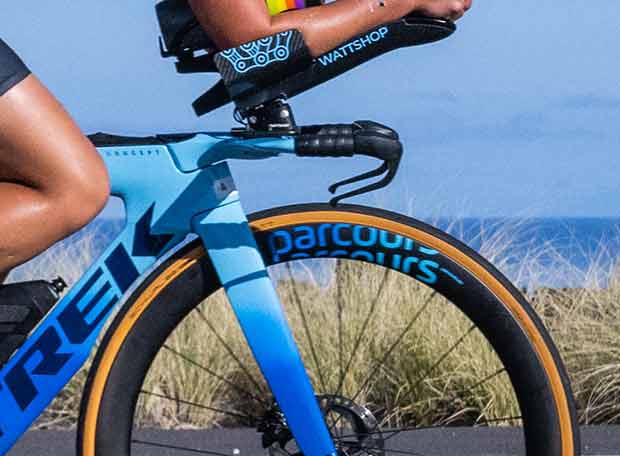
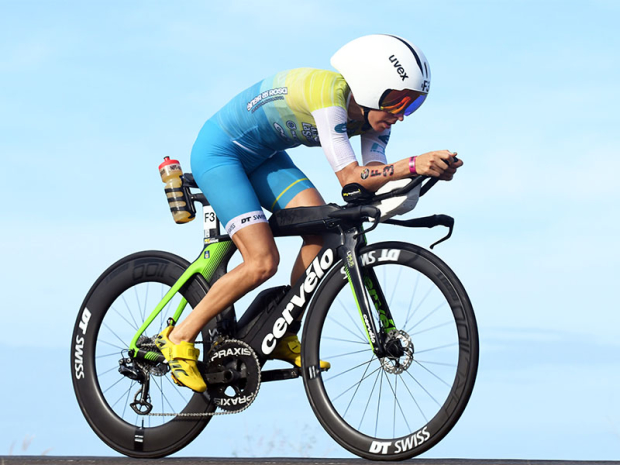
Start the discussion at slowtwitch.northend.network